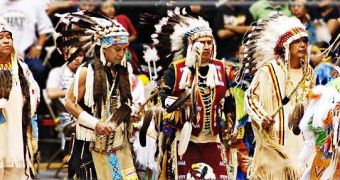Of course, it was not Gitche Manitou their creator. All the Red Skins, from those of North America to those of South America, came from Asia. A new DNA study published in the journal "PLoS One" shows that 6 women founded about 95% of the populations of the modern Native Americans, 20,000 years ago.
"The finding does not mean that only these six women gave rise to the migrants who crossed into North America from Asia in the initial populating of the continent. The women lived between 18,000 and 21,000 years ago, though not necessarily at exactly the same time. The work confirms previous indications of the six maternal lineages," said co-author Ugo Perego, from the Sorenson Molecular Genealogy Foundation in Salt Lake City and the University of Pavia in Italy.
The team employed mitochondrial DNA. This DNA is encountered in the mitochondria, the organelles that represent the power factories of the cell: they burn glucose using oxygen, delivering the highest amount of energy for the cell. Their DNA is transmitted only by the mother, unlike that of the nucleus.
This way, the mitochondrial DNA reconstructs a lineage, linking a person to his or her mother, then the mother's mother, and so on. This way, the team achieved a "family tree" marking the different mitochondrial DNA lineages encountered in modern Amerindians. This was made by determining mutations in each lineage and using a mutational clock telling how often these mutations emerged - which also allowed the measurement of the 'founding mother''s age (of the lineage).
"The six 'founding mothers' apparently did not live in Asia because the DNA signatures they left behind aren't found there. They probably lived in Beringia, the now-submerged land bridge that stretched to North America," said Perego.
Many questions remained unanswered.
"That finding doesn't answer the bigger questions of where those women lived, or of how many people left Beringia to colonize the Americas. The estimate for when the women lived is open to question because it's not clear whether the researchers properly accounted for differing mutation rates in mitochondrial DNA. Further work could change the estimate, possibly dramatically," said Connie Mulligan of the University of Florida, an anthropologist investigating the colonization of the Americas.

 14 DAY TRIAL //
14 DAY TRIAL //